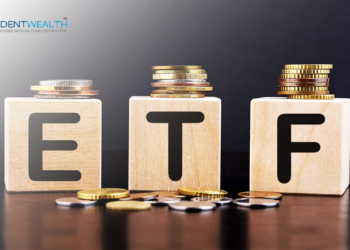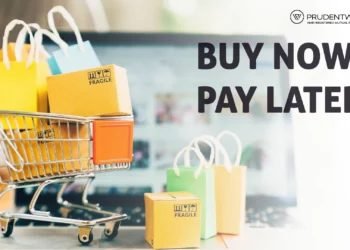Do you know what the Tulip Mania is? Tulips were estimated to cost ten times more than a working man’s average pay in the Netherlands, in the early 17th century, making them more expensive than many homes.
What made them so valuable was the unique color and the limited quantity of those flowers. Similarly, NFT’s are modern-day tulips unique in their kind and restricted to a single copy.
Jokes apart, an NFT (Non-Fungible Token) is a digital asset that symbolizes real-world assets such as art, music, video, and in-game stuff. They are purchased and traded online, often using cryptocurrencies, and are encoded with the same underlying software as many cryptos.
Too technical? Let me explain easily. Let’s say you made a sketch, and you take a snapshot of it, and instead of uploading it on Instagram, you upload it on any of the NFT approved platforms. The image uploaded will have unique attributes which will make it an original copy. You can then auction the art you created, similar to an offline art exhibition where you can put your work on display.
For example, renowned digital artist Mike Winklemann, popularly known as “Beeple,” created “Every day: The First 5000 Days,” possibly the most famous NFT of the moment, which sold at Christie’s for a record-breaking $69.3 million.
HUGE!!! Yes, that was the sum paid for the digital art, another digital art Nyan Cat, a 2011-era GIF of a cat with a pop-tart body, which sold for nearly $600,000 in February. As of late March, NBA Top Shot had grossed more than $500 million in sales. A single NFT featuring LeBron James sold for more than $200,000.
Individual photographs, as well as the full collage of images, can be viewed online for free by anyone anywhere. So, why are individuals willing to spend millions of dollars on something that they can easily screenshot or download?
Because it gives the buyer the right to keep the original item. Not only that but also includes built-in authentication, which acts as proof of ownership. Collectors value “digital bragging rights” nearly as much as the item itself.
How do NFTs work?
On a high level, the majority of NFTs are part of the Ethereum blockchain. Ethereum is a cryptocurrency, similar to bitcoin and dogecoin, but its blockchain also allows these NFTs, which store additional data that allows them to function uniquely, for instance, an ETH coin. It’s worth mentioning that various blockchains can use it in their very own ways.
What’s worth picking up at the NFT supermarket?
It could be anything digital (paintings, music, even your brain being downloaded and turned into an AI), but the recent hype is centered on selling digital art.
Recently in an auction, the Shahenshah of Bollywood, Amitabh Bachchan, his collection of NFTs smashed all records. The entire collection which includes Madhushala NFTs, Iconic Vintage Posters NFT, The Loot Box NFT, and BigB Punks were sold for a whopping $966,000 or Rs 7.18 crore.
What’s the point of NFTs?
That is dependent on whether you are an artist or a buyer.
I’m an artist.
Well, that’s Great News, you have a sky full of opportunities.
You might be willing to engage in it since it allows you to sell work that would otherwise be difficult to market. What are you going to do if you have an out-of-the-box concept for a digitized sticker? Sell it on the Google Play Store? No way, right?
Furthermore, NFTs include a function that you can enable, which will pay you a percentage every time the NFT is sold or transferred, ensuring that if your work becomes extremely popular and its value skyrockets, you’ll reap part of the benefits forever
I’m a buyer.
One of the most basic advantages of purchasing art is that it allows you to financially support the artists you admire, and it’s also the case with NFTs (which are, by the way, trendier than WhatsApp stickers).
Purchasing an NFT usually includes some fundamental usage rights, such as the right to share the image online or set it as your profile photo. And, of course, there are also the bragging rights that you own the artwork, backed up by a blockchain entry. Like, I’m a collector, not a thief.
Although I feel a little filthy for bringing it up, let’s be honest, the majority of the people hold an NFT’s to gain from speculation, thus NFT’s functions similarly to any other speculative investment: you purchase it and hope that its value rises over time, allowing you to sell it for a profit.
The question now is, are each NFT’s one-of-a-kind?
In the boring, technical sense, each NFT is a distinct token on the blockchain. It could, for example, be a Van Gogh painting with only one definitive edition or a trading card with 50 or hundreds of numbered copies of the same artwork.
For your information, the first-ever tweet on Twitter by its founder Jack Dorsey has been sold for a massive sum of $2.9m. I’m pretty much sure too many of us rarely have any value.
Who would spend big bucks for something that is a trading card?
That is, in part, what makes NFTs so unwieldy. Some people treat them like the future of fine art collection (like a playground for the ultra-wealthy), while others treat them like Pokémon cards (which are available to the general public but also a playground for the ultra-wealthy).
Whether you are an artist or a collector, NFT’s are going to stay and you need to figure out how you can reap the benefit out of it or maybe avoid it altogether.
Written by: CA Suraj Kar
To learn more, get our Journal: PW Insider for FREE!
Read Next: Lumpsum Investment
For more information, reach us at [email protected]
Team, MyGoalMySip.











